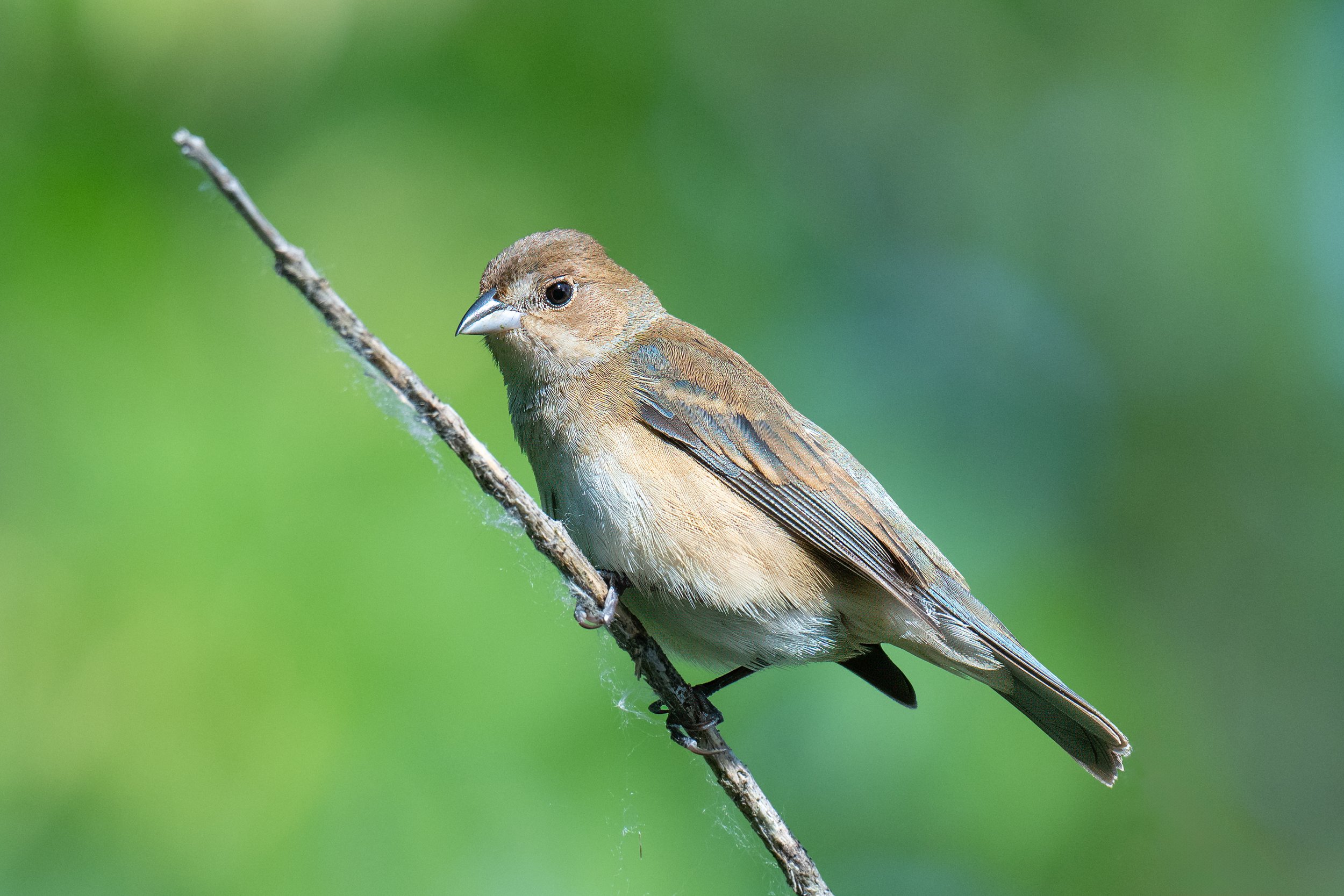A Late May Visit to Magee Marsh
Magee Marsh is one of the most famous birding spots in the world. Located in northern Ohio along the shores of Lake Erie, spring and fall migrations are spectacular at Magee Marsh, bringing in not only 300+ species of birds but also tons of excited birders and bird photographers. The window period to see these birds is tight though. In the spring, you want to be there the first two weeks of May. It’s during that time frame that Magee Marsh hosts probably the most popular birding festival in the world - the Biggest Week in American Birding. This year the Biggest Week was May 3-12, 2024. Due to work commitments, I was unable to attend but I did have a long Memorial Day weekend from May 25-27, 2024. Not knowing what to expect, I made the five hour drive up from Lexington to see if there were any birds still hanging around.
I arrived on Saturday morning and the parking lot for the famed boardwalk had maybe a dozen cars - practically empty compared to what I imagine it was a couple weeks earlier. That didn’t bode well. Still, I was super excited to get on the boardwalk and find some warblers.
I brought along my Nikon Z8 and Nikkor 180-600mm f/5.6-6.3 lens. Before making the trip I researched lens choices and most seasoned visitors recommended bringing a zoom lens in the 200-500 range, and something with short minimum focusing distance as the birds get really close. I think that was a good call and echo that recommendation. If you really want to bring a prime, something in the 400-500mm range is probably your best bet.
I also left the tripod and monopod in the van and handheld all my shots. As quick as these birds move I highly recommend hand-holding.
I walked onto the boardwalk and was instantly greeted by a Prothonotary Warbler. It buzzed nearby in the trees at eye level, and gave me some really good views.
Prothonotary Warbler. Nikon Z8 with Nikkor Z 180-600mm VR lens at 600mm, f/6.3, 1/800 sec, ISO 3200.
Prothonotary Warbler. Nikon Z8 with Nikkor Z 180-600mm VR lens at 600mm, f/6.3, 1/2000 sec, ISO 2500.
What was immediately evident was that the seed pods these birds are attracted too had already opened up and were being dispersed by their white fluff. The white fluff was everywhere, as you can see in some of these images.
Prothonotary Warbler. Nikon Z8 with Nikkor Z 180-600mm VR lens at 600mm, f/6.3, 1/1000 sec, ISO 10,000.
As I made my way down the boardwalk, Gray Catbirds and Red-winged Blackbirds were the two most common species. I would see some movement, only to spot yet another catbird or blackbird. But mixed in were a good supply of Yellow Warblers. I found several areas where pairs of Yellow Warblers were claiming territory, and they seemed rather unfazed by my presence and kept busy searching for insects and defending their territories from other birds.
Yellow Warbler. Nikon Z8 with Nikkor Z 180-600mm VR lens at 600mm, f/6.3, 1/1000 sec, ISO 1250.
Yellow Warbler. Nikon Z8 with Nikkor Z 180-600mm VR lens at 600mm, f/6.3, 1/1600 sec, ISO 1400.
While catbirds, blackbirds, prothonotary’s, and yellow warblers made up the bulk of the birds I saw over the weekend, there were occasional glimpses of other birds. I had three or four sightings of Baltimore Orioles high in the canopy where they appeared to be feeding on seed pods.
Baltimore Oriole. Nikon Z8 with Nikkor Z 800mm f/6.3 VR S lens at f/6.3, 1/2000 sec, ISO 1250. I took this shot from the boardwalk parking lot. I was actually in my van on a phone call when I spotted this bird. It was high in the canopy, but in a relatively open space so I used the 800mm lens to get a little more reach.
White-eyed Vireos were also present but they tended to stay deep in the brush and I could not get a clean shot. I did see this “little brown bird” out in the open, took the shot, and only later figured out she was a female Indigo Bunting.
Indigo Bunting (female). Nikon Z8 with Nikkor Z 180-600mm VR lens at 530mm, f/6.3, 1/1250 sec, ISO 500.
Were the birds dripping from the trees at Magee Marsh? Not exactly. Late May is too late for that, which I knew before I even left home. The real purpose of this trip was reconnoissance - to get a sense of the area, discover which trails to walk, where to park the camper van, where to camp, and that sort of thing. Next year will be a different story!
Happy birding!







